The Heffron Centre in Maroubra, Sydney, stands as a testament to how authentic public art powered by collaborative project teams can transform urban spaces.

December 17th, 2024
This community sports facility – and South Sydney Rabbitohs’ headquarters – features Shimmer, a reverent interpretation of Indigenous cultural fishing practices that weaves throughout the building’s fabric. The installation heralds the migration of mullet, barrow hawks and stingrays through the Kamay waters at Botany Bay, celebrating the Bidjigal people who lived on these coastlines and fished in these fertile waters for thousands of years.
Golden painted motifs envelop the building facade and float through to the interior via intricate decals on the glass windows, while sculpted bronze artefacts complement a traditional mural on the western entrance wall. Seamlessly integrated into the building, the project is a case study in how public art is conceived, created and embedded within urban development in Australia today.

Commissioned by Randwick City Council, the Heffron Centre artwork celebrates the rich First Nations history of the region. The project brought together a diverse team through collaboration between Re-Right Collective artists Carmen Glynn-Braun and Dennis Golding, Tilt Industrial Design, Co-op Studio architects and Bidjigal Elder Uncle Steven Russell, as well as Cultural Capital with curator
Tess Allas. Their collective goal was to create an artistic experience that was both embedded into the fabric of the building and connected deeply to the land.
Tasked with developing the artist’s brief and curatorial vision, Cultural Capital formed a public art panel that included representatives from the La Perouse Land Council, the South Sydney Rabbitohs and the Randwick Art Advisory Panel. Lily Keenan, Curator and Project Manager at Cultural Capital, explains further: “This diverse group ensured that multiple perspectives were considered in the shaping of the project.”

Glynn-Braun and Golding carefully developed their concepts in close consultation with Bidjigal Elder and Cultural Knowledge Holder, Uncle Steven Russell. Recounting stories of local Indigenous life, Uncle Steven helped the artists translate significant events of the Bidjigal calendar into the tri-part artwork — Shimmer. Their research involved deep engagement with Indigenous iconography, including museum visits and community consultation. The resulting artwork comprises three interconnected pieces — reflecting the Indigenous relationship with nature as they interact with sunlight throughout the day. Each component tells Uncle Steven’s story of the Bidjigal people and their profound connection to the natural world.
Reflecting on the success of the project, Keenan notes that early involvement of all parties was critical. “There’s now a real understanding of the critical need to involve art consultants, artists and industrial designers, alongside the architects and urban designers early in the process. This allows us to achieve a more meaningful outcome and ensures the artwork is fully integrated into buildings and spaces.”
Elaborating on this, Elizabeth Lewis, Public Art Division Manager at Tilt Industrial Design, says that being involved from the inception of projects not only facilitates greater technical integration but also enhances the creative freedom of the artists they work with. “By establishing a support network of experts in various fields, artists are liberated to focus on their creative vision without being burdened by technical or logistical concerns.”

Tilt provided crucial recommendations for translating Indigenous narratives into durable, built forms. The light-reactive facade mural, with its distinctive golden motifs, required precise application of extensive interior vinyl decals. The strategic placement of bronze sculptures adds a three-dimensional element to the storytelling, while the practice’s comprehensive knowledge ensured seamless integration with the Centre’s architecture, maintaining its connection to the coastal environment.
Since completion, the facility has become a focal point for community activity in Maroubra. With a 30 per cent increase in community engagement compared to previous facilities on the site, many have cited the artwork as a key attraction.

Recognising and paying respect to the traditional owners of this land, it gives every visitor to the Heffron Centre the opportunity to engage with the area’s unique and vibrant Aboriginal culture. Indeed, local schools are visiting the space for educational trips, using Shimmer as a starting point for discussions about Indigenous history and culture — demonstrating the extensive and ongoing impact of the artwork.
The Heffron Centre project demonstrates how early collaboration and multidisciplinary expertise can elevate public art from simple decoration to a tool for community engagement and cultural expression. It showcases how public art has evolved from being an afterthought to becoming part of master-planning and precinct development.
Tilt Industrial Design
tilt-industrialdesign.com


INDESIGN is on instagram
Follow @indesignlive
A searchable and comprehensive guide for specifying leading products and their suppliers
Keep up to date with the latest and greatest from our industry BFF's!
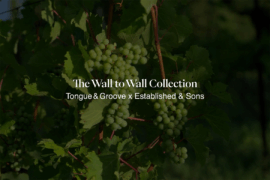
London-based design duo Raw Edges have joined forces with Established & Sons and Tongue & Groove to introduce Wall to Wall – a hand-stained, “living collection” that transforms parquet flooring into a canvas of colour, pattern, and possibility.
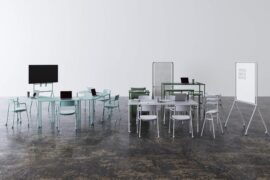
Welcomed to the Australian design scene in 2024, Kokuyo is set to redefine collaboration, bringing its unique blend of colour and function to individuals and corporations, designed to be used Any Way!
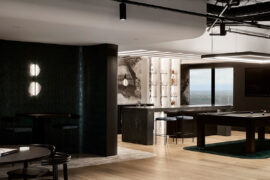
The shared Melbourne office brings together Studio 103 and McCormack in a dual headquarter that doubles as a showcase of materials and craft.
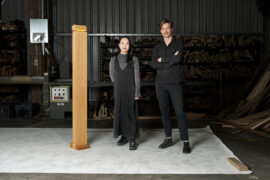
AHEC’s KEEP exhibition at Cult Sydney sees six Australian architects craft lasting furniture pieces, on view until 4th October.
The internet never sleeps! Here's the stuff you might have missed
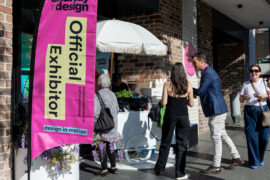
Collingwood is one of three precincts at Saturday Indesign 2025 on 6th September – find out what’s on there!
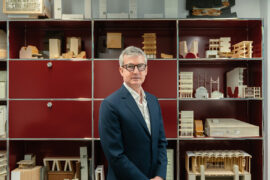
Leading by design, Erik L’Heureux has recently taken the helm of Monash University’s Department of Architecture, and so a new and exciting journey begins for both L’Heureux and the University.